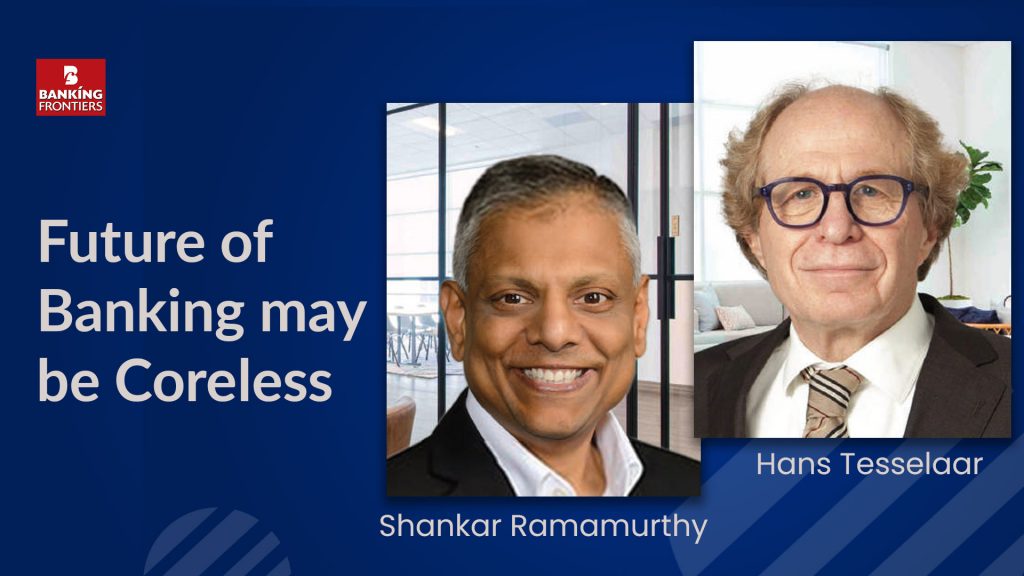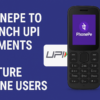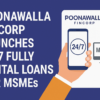At SIBOS 2023, Shankar Ramamurthy of IBM Consulting & Hans Tesselaar from BIAN, held a thought-provoking session on the groundbreaking study, ‘Embedded Finance: Creating the Everyday, Everywhere Bank,’ drawing on insights from 1000+ banking executives & 12,000 consumers worldwide:

This collaboration between IBM, Red Hat, and BIAN marks a pivotal moment in redefining the future of banking. It is a testament to the growing need for synergy in the financial ecosystem. Their collective efforts aim to harness the power of collaboration and partnership, paving the way for transformative banking experiences. The study revealed 5 significant findings that are reshaping the banking sector:
- Recognition vs. Implementation: While 70% of banking executives acknowledge the importance of embedded finance, a mere 20% have ventured into relevant initiatives.
- Regional Dynamics: Banks in growth markets, particularly in Asia and Latin America, are at the forefront of embedded finance innovation.
- The Expectation Chasm: A noticeable divide exists between bank investments and consumer expectations, with banks focusing on payments and security and consumers desiring enhanced customer service and rewards.
- Technological Hurdles: Outdated banking architectures are impeding the adoption of embedded finance due to a lack of APIs and microservices.
- The Privacy-Security Nexus: Both banks and consumers continue to prioritize privacy and security in the digital banking realm.
A highlight of the discussion was the introduction of Coreless 3.0, an initiative aimed at aiding banks in the transition to cutting-edge technology. This project emphasizes the importance of open banking, empowering banks to offer personalized and efficient services through API-driven models. This vision reflects a future where banking is not just a service, but an integral part of customers’ daily lives, embedded seamlessly into their everyday transactions and interactions.
The dialogue emphasized the critical role of exponential technologies such as hybrid cloud computing, advanced analytics, and generative AI. These technologies are key in meeting evolving customer expectations. Hybrid cloud computing combines private and public clouds, allowing banks to optimize their IT infrastructure for better agility, security, and cost-effectiveness. By leveraging hybrid cloud computing, banks can efficiently manage data, run applications, and scale services according to demand. This flexibility is vital for banks to quickly adapt to market changes and customer needs.
Advanced analytics enables banks to unlock the value of their huge piles of data, providing deep insights into customer behavior, preferences, and needs. This understanding allows for the creation of personalized financial products and services, enhancing customer satisfaction and loyalty. Advanced analytics also plays a crucial role in risk management and fraud detection, critical areas in banking.
 Generative AI has the potential to revolutionize customer interactions, offering personalized advice and solutions in real-time. It also enhances operational efficiency by automating complex processes and creating new opportunities for innovations.
Generative AI has the potential to revolutionize customer interactions, offering personalized advice and solutions in real-time. It also enhances operational efficiency by automating complex processes and creating new opportunities for innovations.
The discussion underscored the importance of ecosystems and partnerships, proving essential for banks striving to innovate and adapt in a rapidly changing financial landscape. The banking sector’s transformation is not a solo journey. It requires collaborations across various industries and sectors. Banks need to partner with technology firms, fintech startups, and even businesses outside the financial sector to create an ecosystem that supports and advances embedded finance. These collaborations can lead to innovative service offerings and create new value propositions for customers.
Transformation Roadmap
Today’s banking customers are more informed, tech-savvy, and have higher expectations than ever before. They seek convenience, speed, transparency, and personalized experiences. Banks must adapt to this new customer paradigm by not only offering digital services but also ensuring these services are intuitive, secure, and integrated into the customers’ digital journey. This adaptation involves leveraging customer data ethically and intelligently to predict needs, offer relevant advice, and provide proactive solutions. It also means engaging with customers across various digital channels, maintaining a consistent and responsive presence. In doing so, banks can build deeper relationships with their customers, fostering loyalty and trust in an increasingly competitive and digital-first financial landscape.
Shankar and Hans stressed the necessity for banks to evaluate their current positions and chart a course towards digital transformation. They must embrace the opportunities presented by technological advancements while mitigating potential threats. The key lies in ambitious strategies, swift action, and leveraging the strengths of the ecosystem.
With embedded finance and advanced technologies at the forefront, the sector is on the brink of a revolutionary shift. The road ahead demands collaboration, a deep understanding of customer needs, and an agile approach to harnessing technological innovations.
Read more:
ISO 222 facilitates streamlined processes

Women and Finance – New Insights









